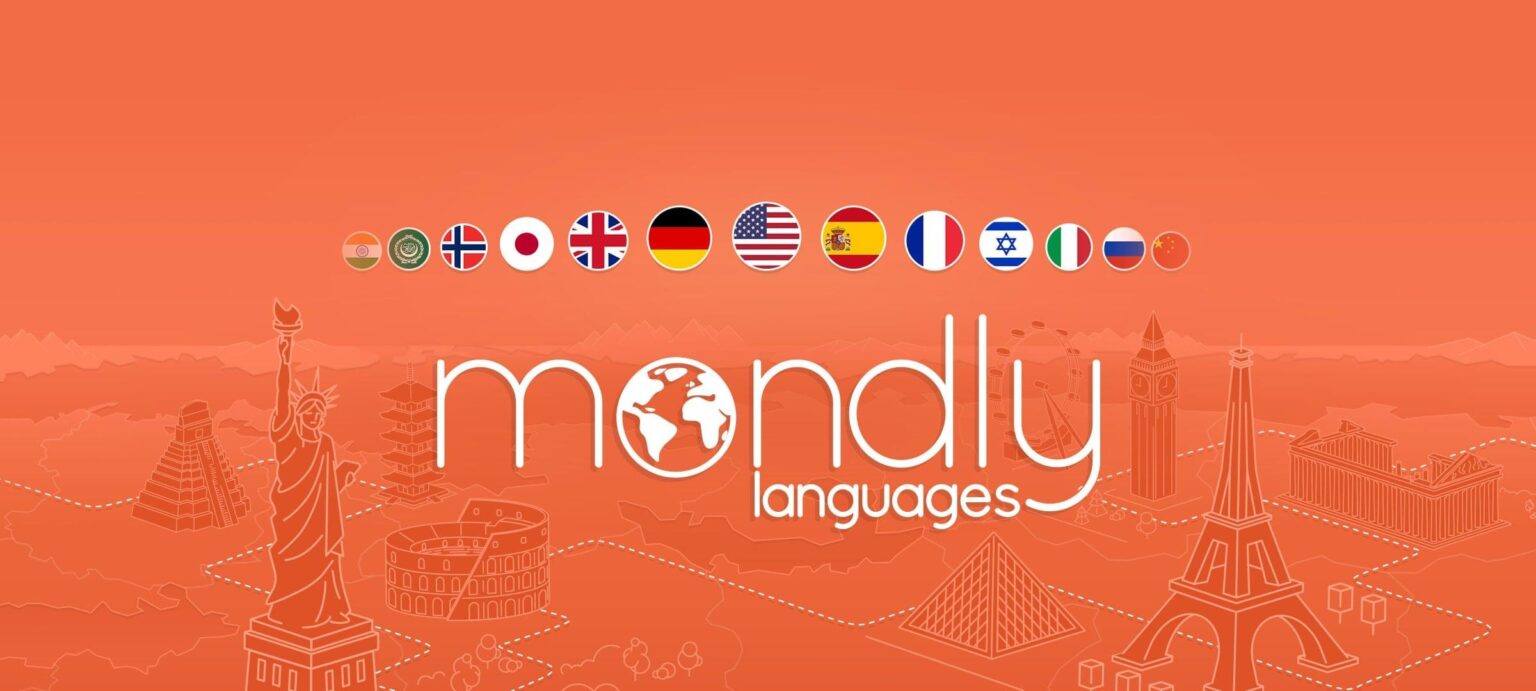Learning a new language has never been easier, especially Chinese/Mandarin. Mondly, the innovative language learning app, is here to revolutionize the way you acquire language skills. Based on my experiences with Chinese learning, this review will take you through the various aspects of Mondly, providing you with a comprehensive understanding of its features, benefits, and areas for improvement.
What is Mondly

Mondly (www.mondly.com) stands as an e-learning hub exclusively devoted to the pursuit of language acquisition, catering to both adults and children alike. This widely embraced platform offers a swift route to honing your linguistic abilities and attaining fluency in your chosen language.
The essence behind Mondly revolves around accessibility, allowing anyone armed with a mobile device or computer to embark on language learning ventures across a selection of more than 30 languages, irrespective of location.
Mondly takes the form of a gamified language learning application, designed to furnish you with a guided yet interactive educational journey, employing memory exercises and a remarkably user-friendly interface.
Upon becoming part of the Mondly community, you’ll have the opportunity to learn in tandem with friends and family members. Moreover, you’ll gain access to a vibrant network of over 70 million users worldwide, along with an extensive presence on various social media platforms.
How does Mondly work
Mondly operates consistently across all chosen languages, allowing you to master any language you desire through its array of lessons, flashcards, chatbots, and thematic courses.
The lessons are designed to be self-paced, accommodating your individual schedule. You can engage with them on the go, using your computer, mobile device, or tablet. Notably, your progress can be monitored through statistics and leaderboards, enabling you to benchmark your achievements against those of fellow learners.

Mondly’s subscription model offers the flexibility of a monthly or yearly payment, granting you unrestricted access to either a single language or the comprehensive library of 30+ languages.
Personally, I decided to explore Mondly’s Premium option, granting me access to all languages and proficiency levels. I opted to embark on a journey to learn Brazilian Portuguese.
Each lesson comprises eight components divided into three categories: lessons, conversation, and vocabulary. These encompass six audio, writing, and memory-focused exercises, an interactive dialogue, and a vocabulary exercise employing flashcards.

The chatbot-driven conversational lessons encompass eight diverse thematic modules, which rely on voice recognition technology.
As a whole, you’ll encounter customized daily lessons, along with weekly quizzes and monthly challenges tailored to your progress, regardless of the language you’re studying.
Furthermore, the structure of Mondly imparts a sense akin to a board game, where your objectives, accomplishments, and advancement are visually tracked along your “learning path.”

What I like about Mondly
I think Individuals seeking to embark on a Chinese learning journey from the ground up will find great value in Mondly’s engaging and imaginative approach. Likewise, if you aim to enhance or refine your Chinese proficiency, Mondly’s educational offerings will undoubtedly prove advantageous.
Moreover, for those who relish the opportunity to learn collaboratively with family and friends or even engage in friendly competition, Mondly’s gamified methodology is sure to resonate and enhance the overall experience.
Unlocking Authentic Conversations
To me, one of the standout features of Mondly is its ability to help users engage in authentic conversations from the very beginning. What I’ll highlight is how even a few mastered phrases can impress and connect with native speakers. This anecdote underscores the effectiveness of Mondly’s teaching approach in providing learners with practical expressions that resonate with locals.
Learning Made Fun and Effective
One of my friends who’s trying to learn Chinese showcased the app’s capability to accelerate language learning. Within just five days, they found themselves equipped with a substantial vocabulary and useful phrases, demonstrating the efficiency of Mondly’s approach. The incorporation of visuals, audio, and written exercises adds an interactive layer to the learning process, making it engaging and enjoyable.
Progressive Learning and Continuous Improvement
I think it’s worth emphasizing the app’s comprehensive content and its continuous improvement efforts. Despite covering less than 10% of the material, users notice consistent progress and an ability to engage in basic conversations. With frequent updates that focus on speaking and self-listening exercises, Mondly proves its dedication to enhancing the learning experience based on user feedback.
Strengths and Challenges of the App
Mondly’s strengths in teaching speaking skills and pronunciation are commendable. The hands-free practice and speech recognition technology provide me with a practical avenue for honing their skills. However, I still feel there are certain areas for improvement. The chatbot exercises, while innovative, can be adjusted to be more accommodating for learners, especially those unfamiliar with the Chinese language. Additionally, the app’s adaptation to languages with unique features like gender-specific pronouns is suggested for a more personalized experience.
Tailored to Language and Learning Needs
Mondly’s adaptability is evident in a user’s transition from Spanish to Thai. While the app excels in the Spanish module, adjustments are suggested for Thai, highlighting Mondly’s versatility in catering to a diverse range of language learners. The Romanization option for Thai script and the structured lesson approach are highlighted as strengths.

Pros and Cons of Mondly
| Aspect | Description |
|---|---|
| Innovative Features | Mondly employs AR, VR, and chatbot interactions to maintain learners’ engagement and interest throughout their language learning journey. |
| Competitive Element | The incorporation of leaderboards and points introduces a competitive edge that motivates users to complete lessons and quizzes. |
| Language Variety | Mondly offers an extensive selection of languages, accommodating learners with diverse linguistic backgrounds. |
| Differentiation Challenges | While excelling at beginner levels, Mondly’s depth falls short for advanced learners, making it less suitable for those aiming to deepen language comprehension. |
| Subscription Model | The free version offers limited content access, while unlocking Mondly’s full potential necessitates a premium subscription, commencing at $9.99 per month. |
| Innovative, Yet Unnatural | Some innovative features like chatbot conversations and augmented reality lessons might come across as contrived and less organic. |
| Language Quality Variation | Despite offering a plethora of languages, course quality varies, with certain languages requiring further enhancement. |
Exploring Mondly’s Features and Functionality
- Daily Use for Consistency: Mondly encourages short but frequent daily lessons, and the app’s reminders foster consistency in learning. Recap sessions and review options add to the effectiveness of each lesson.
- Translation for Familiarity: Mondly’s emphasis on translating between a familiar language and the target language aids in learning comprehension. The combination of typing, listening, speaking, and word selection fosters a well-rounded learning experience.
- Variety of Learning Methods: Mondly’s model incorporates diverse learning methods, including tailored daily lessons, thematic pathways, augmented reality lessons, and chatbot interactions. This varied approach prevents monotony and keeps learners engaged.
- Weekly Quizzes and Monthly Challenges: Regular quizzes and challenges reinforce learning and motivate users to stay consistent with their studies. The gamified approach adds an element of achievement and progress tracking.
- Augmented Reality (AR): AR lessons add an innovative twist to language learning by creating a CGI teacher for immersive learning. While entertaining, some users found this feature to be more of a gimmick than an effective learning tool.
- Virtual Reality (VR): Mondly’s VR component allows users to engage in realistic conversations with virtual characters. The feature is praised for its impact on pronunciation practice and conversational confidence.
- Mondly Kids: For young learners, Mondly Kids offers an engaging platform with illustrations and interactive content. The guided learning pathway provides structure for language acquisition.
- MondlyWORKS: Catering to corporate clients, MondlyWORKS is utilized by companies to improve internal and external communication. Its features include progress tracking for employees.
- Oxford English Language Tests: A partnership with Oxford University Press has resulted in an English module based on CEFR guidelines. The module offers customized practice tests for different language levels.
Comparison with Competitors
- Duolingo vs. Mondly: Both apps offer gamified language learning experiences, but Duolingo’s structured progression and free model may appeal to some learners more.
- FluentU vs. Mondly: The two apps take different approaches to language learning, with FluentU emphasizing authentic content and Mondly focusing on varied learning methods.
- Babbel vs. Mondly: While both apps offer freedom in learning paths, Babbel’s more advanced content may cater better to those beyond the beginner level.
- Rosetta Stone vs. Mondly: Rosetta Stone’s immersive approach may be overwhelming for beginners, making Mondly a more suitable choice for building a foundational understanding.
The Final Verdict: A Promising Journey
In conclusion, I think Mondly’s innovative features and commitment to improving language learning make it a promising tool for learners of all levels. While some areas may require refinement, the app’s adaptability and variety of learning methods set it apart in the language learning landscape.
For beginners and those seeking an interactive and engaging language learning experience, I believe Mondly is undoubtedly worth considering. As with any language learning journey, finding the right tool that resonates with your learning style is key, and Mondly’s unique approach might just be the catalyst you need to embark on your linguistic adventure.
FAQ: About Mondly review
Both Duolingo and Mondly are popular language learning apps with their own strengths. Duolingo offers more free features and a structured approach, while Mondly incorporates innovative features like AR, VR, and chatbot interactions. The choice between the two depends on your learning preferences and goals.
Mondly offers both free and premium subscription options. The premium membership costs $9.99 per month or $47.99 per year, providing unlimited access to lessons and features.
Some disadvantages of Mondly include its limited depth for more advanced learners, the need for a subscription to access premium content, and certain innovative features feeling forced or less natural.
The time it takes to learn a language on Mondly varies based on factors such as your previous language learning experience, the amount of time you dedicate to daily practice, and the complexity of the language. Consistent practice over several months or years is usually required to achieve fluency.
The difficulty of learning a language depends on your native language, language learning experience, and linguistic similarities. Languages with complex grammar structures, unique writing systems, and drastically different phonetics can be considered challenging. For English speakers, languages like Mandarin Chinese, Arabic, and Korean are often seen as difficult to learn.
Spending 30 minutes a day on language learning can be beneficial, especially if you maintain consistency over time. However, the more time you invest, the faster you’ll likely progress. Pairing regular practice with a variety of learning methods can help maximize your language learning efficiency.
Achieving fluency in a language within 3 months is a challenging goal, especially for languages significantly different from your native tongue. While it’s possible to make substantial progress in 3 months, attaining fluency usually requires more time, consistent practice, and immersion in the language.


